One of the more fascinating aspects of British Columbia's ecology is salmon. Their impact on life here ranges from the coasts of our islands and mainland to deep within inland forests, from sea to sky.
Trees along salmon streams have wider growth rings, indicating faster growth—likely due to the nitrogen and phosphates the salmon bring upstream—and the forests they're in are often denser. These forests aren't only comprised of more vegetation, but more animal life as well. Salmon are foundational to countless species living near all kinds of bodies of water.
They're an essential component of what makes this land the way we've come to know and love it. Without them, our landscapes and wildlife would be much different.
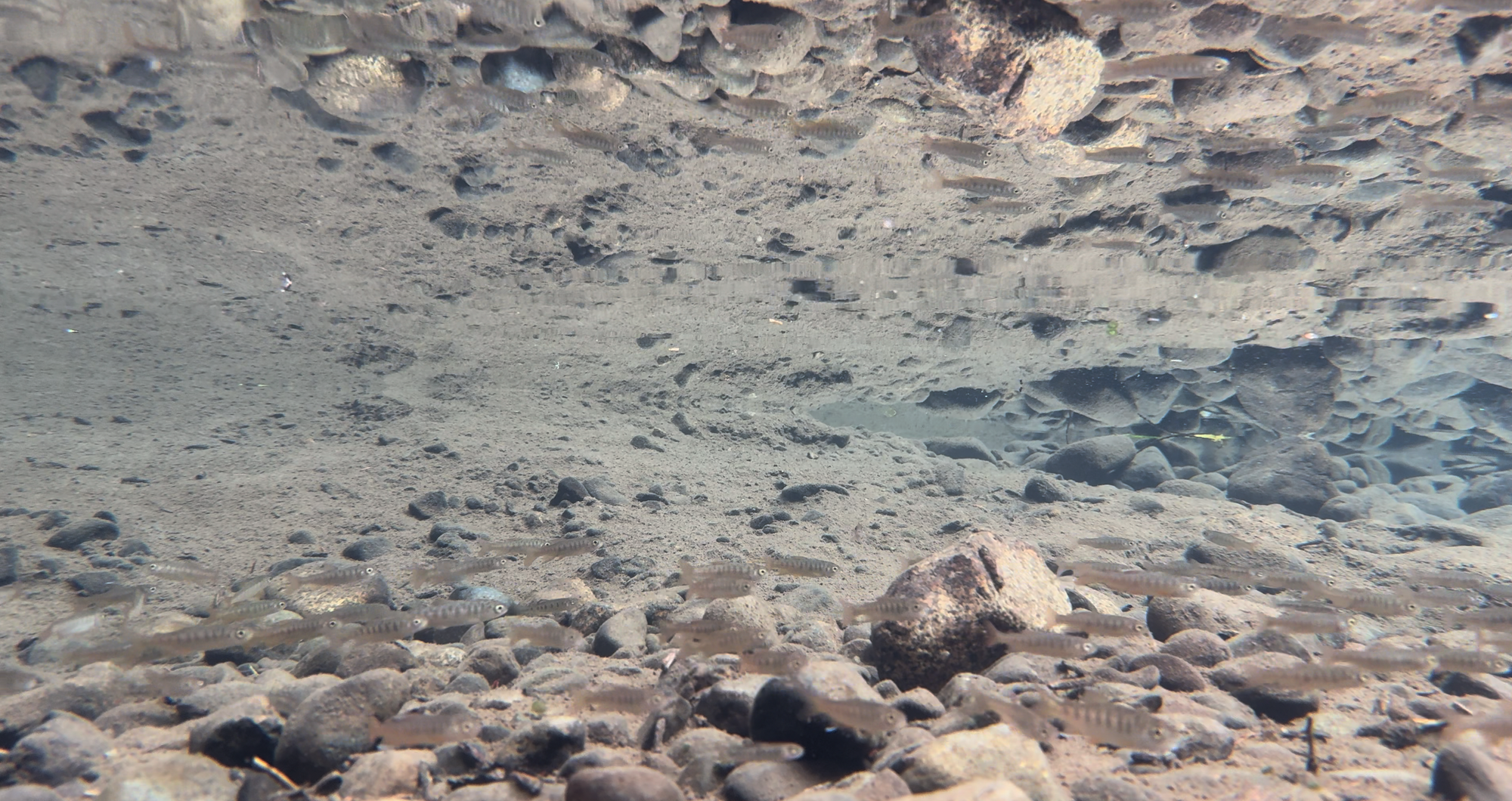
The tiny fish here don't seem special at a glance. They'll eventually grow up to 80cm though, travel thousands of kilometres in the sea throughout their lives, and eventually migrate tens to thousands of kilometres back up their spawning streams. Everywhere they go they'll serve as keystones in the food webs they're a part of, both as predators and prey. They'll feed on thousands of forage fish, yet feed pods of orcas as well. It's incredible how much potential these little creatures have.
I could go on but I don't have anything new or interesting to add about these animals. Other people understand them much better than I do. I just happen to like them.
The distinctive vertical bars and white fin tips are how you can ID these babies as coho salmon. They're around 5cm in length right now, living in a pool around 10cm deep, 1m wide and perhaps 5m long. Will it dry before rain comes? It's hard to say, but many have already.
Coho are mostly distributed in small populations within smaller stream systems (much like these ones are), so each population is relatively vulnerable to ecological changes like logging, pollution, culverts, and dams. Even small variations in local hydrology can be the difference between ease of life or certain death for them. The creek bed is virtually guaranteed to dry after spring, but how severe the drying is depends on precipitation, heat, and the surrounding forest's water retention capacity throughout summer.
Fortunately, Cumberland has established a community forest around this creek and the health of this watershed is taken seriously. Though a lot of them will die as the pools gradually empty with the falling water levels, many will survive and the creek will continue to be protected from disruption, pollution, and exposure to summer heat. This coho population has an okay chance at surviving for a while yet.
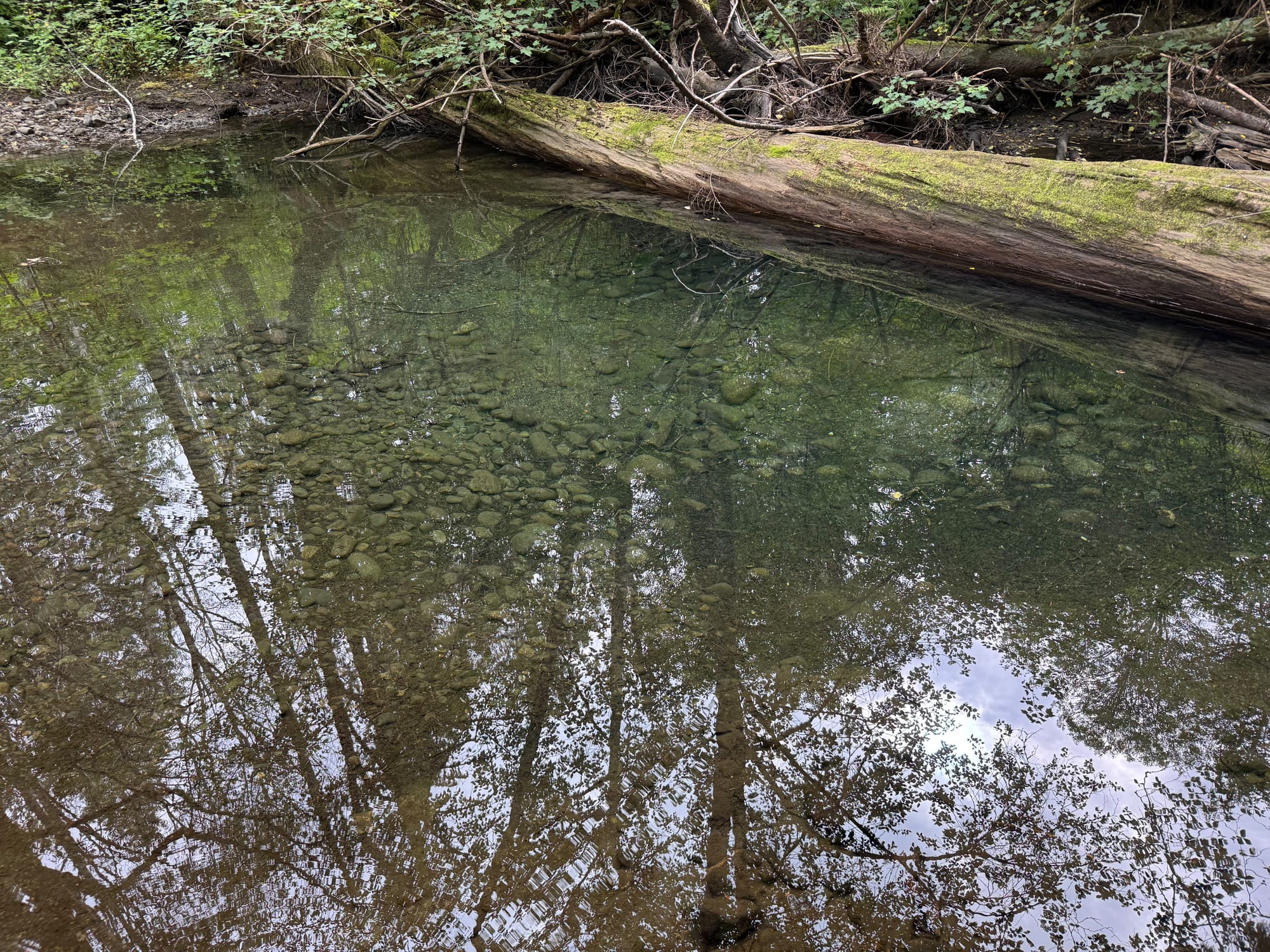
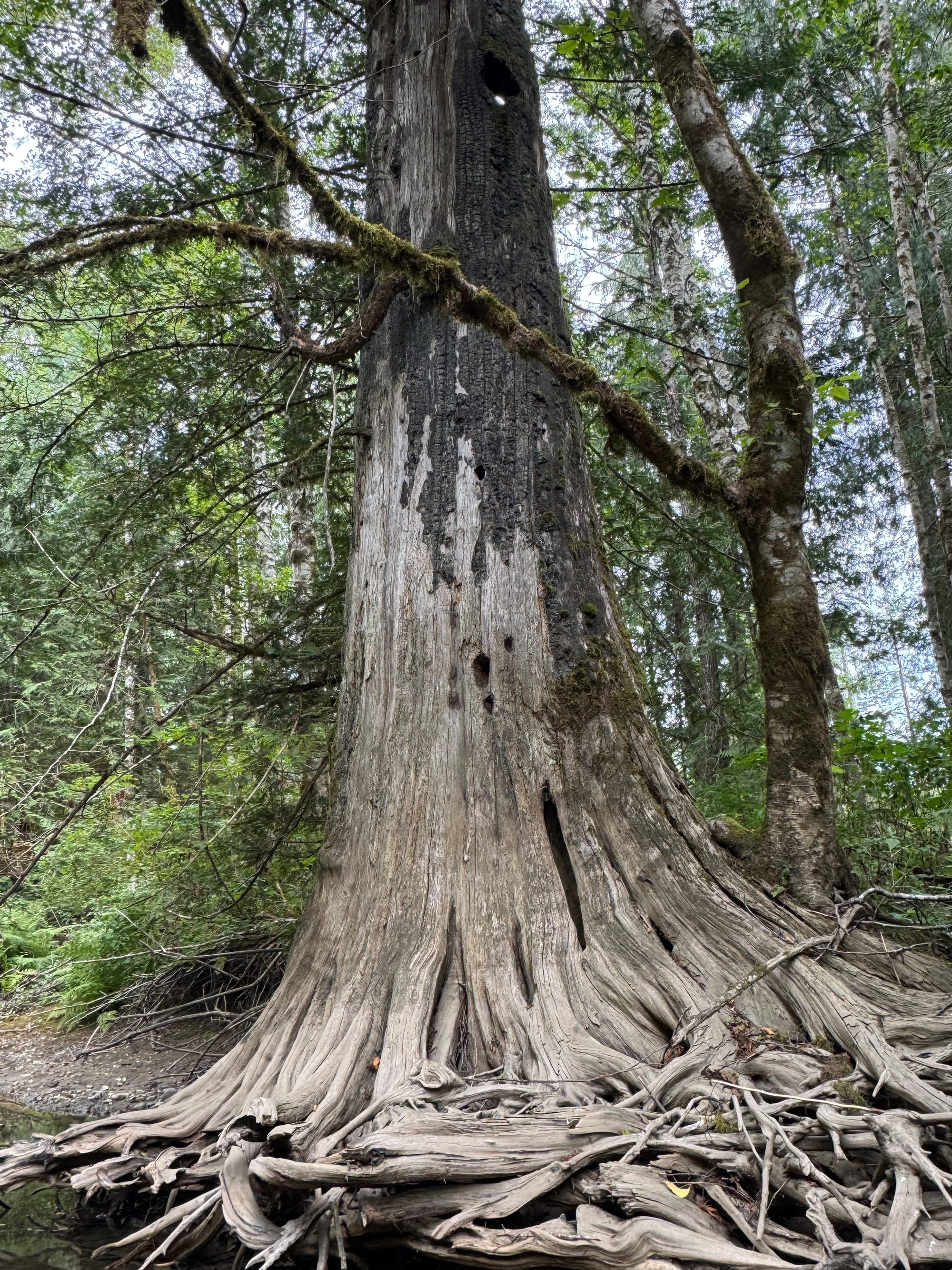
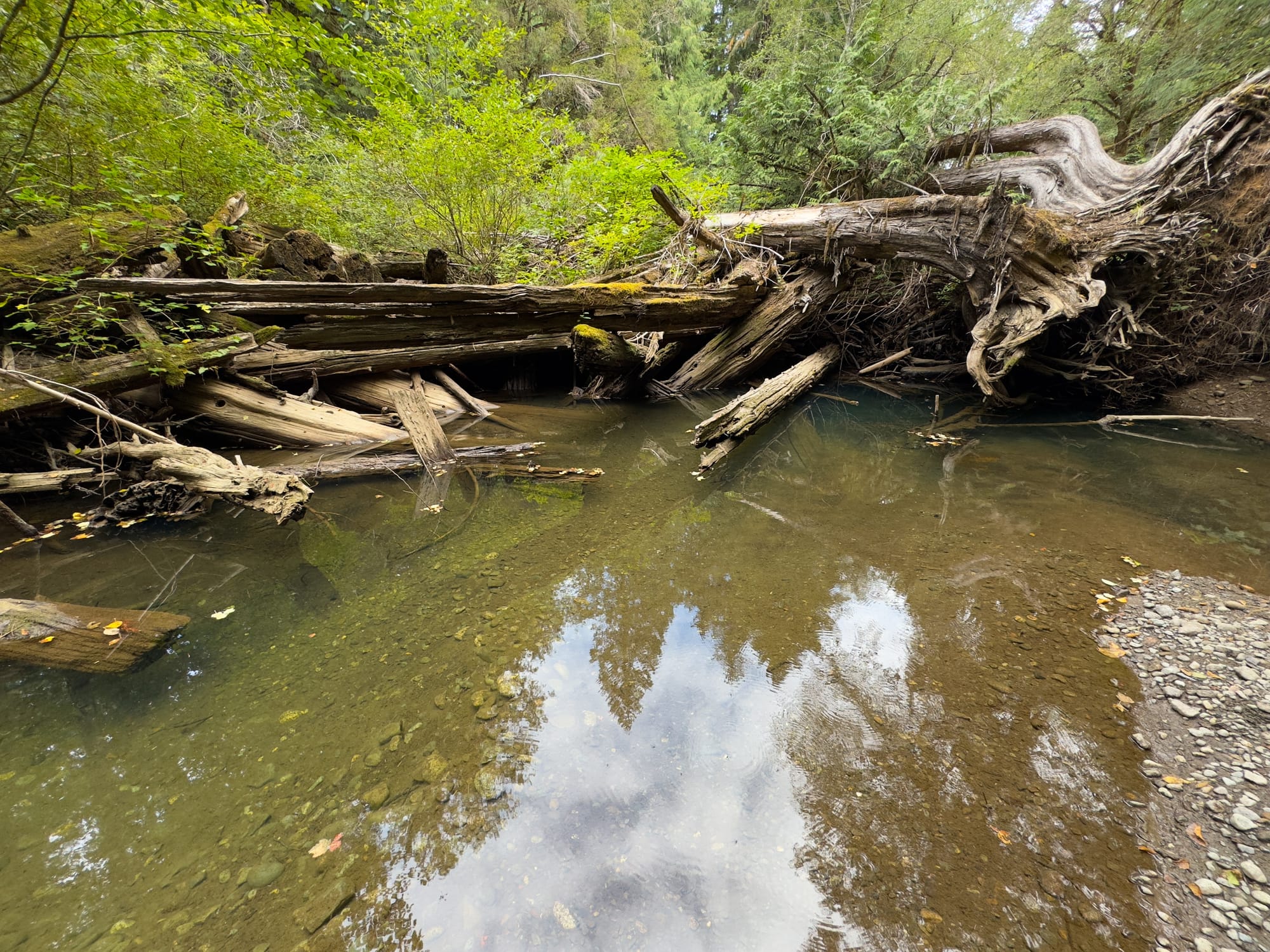
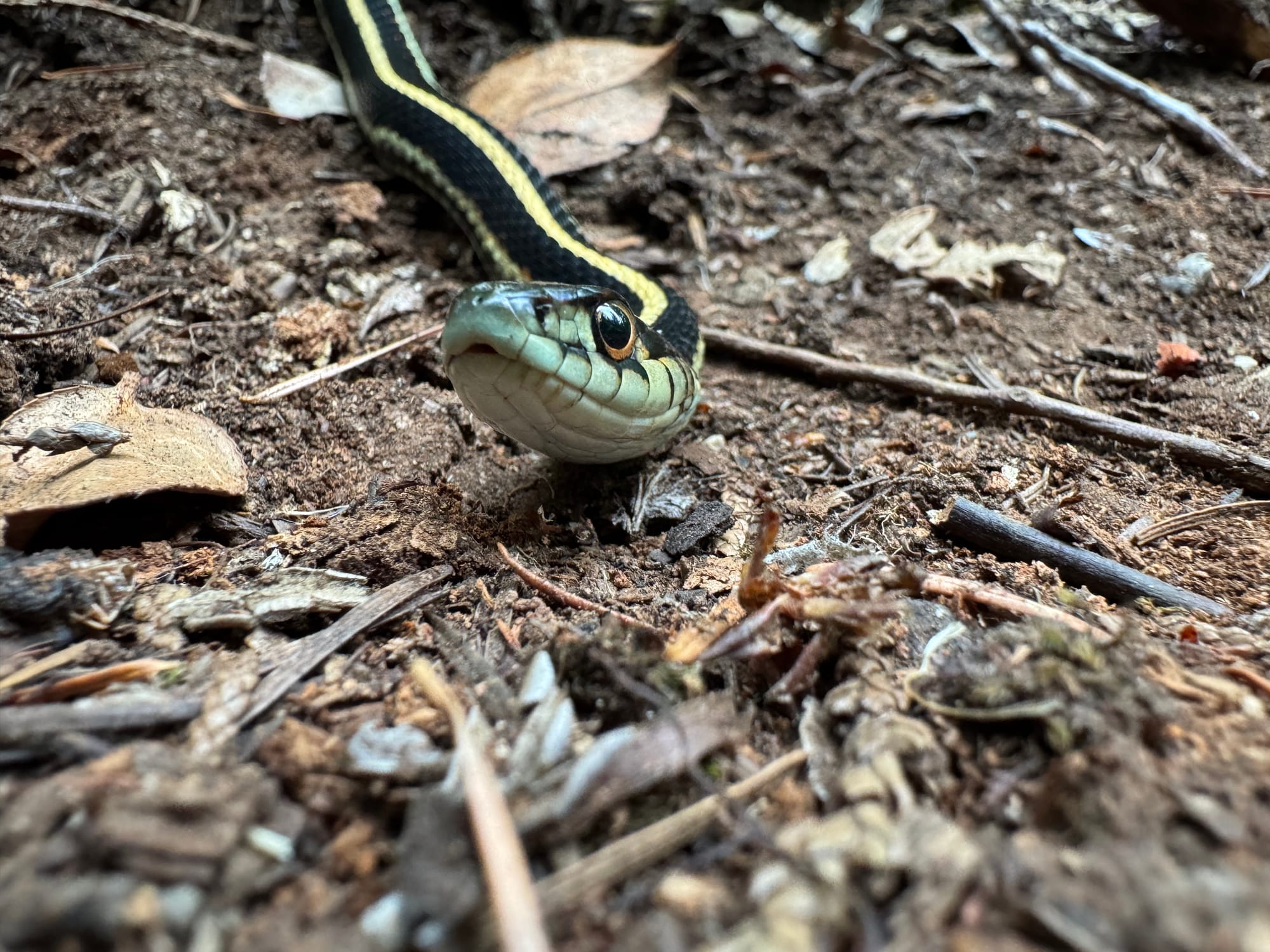
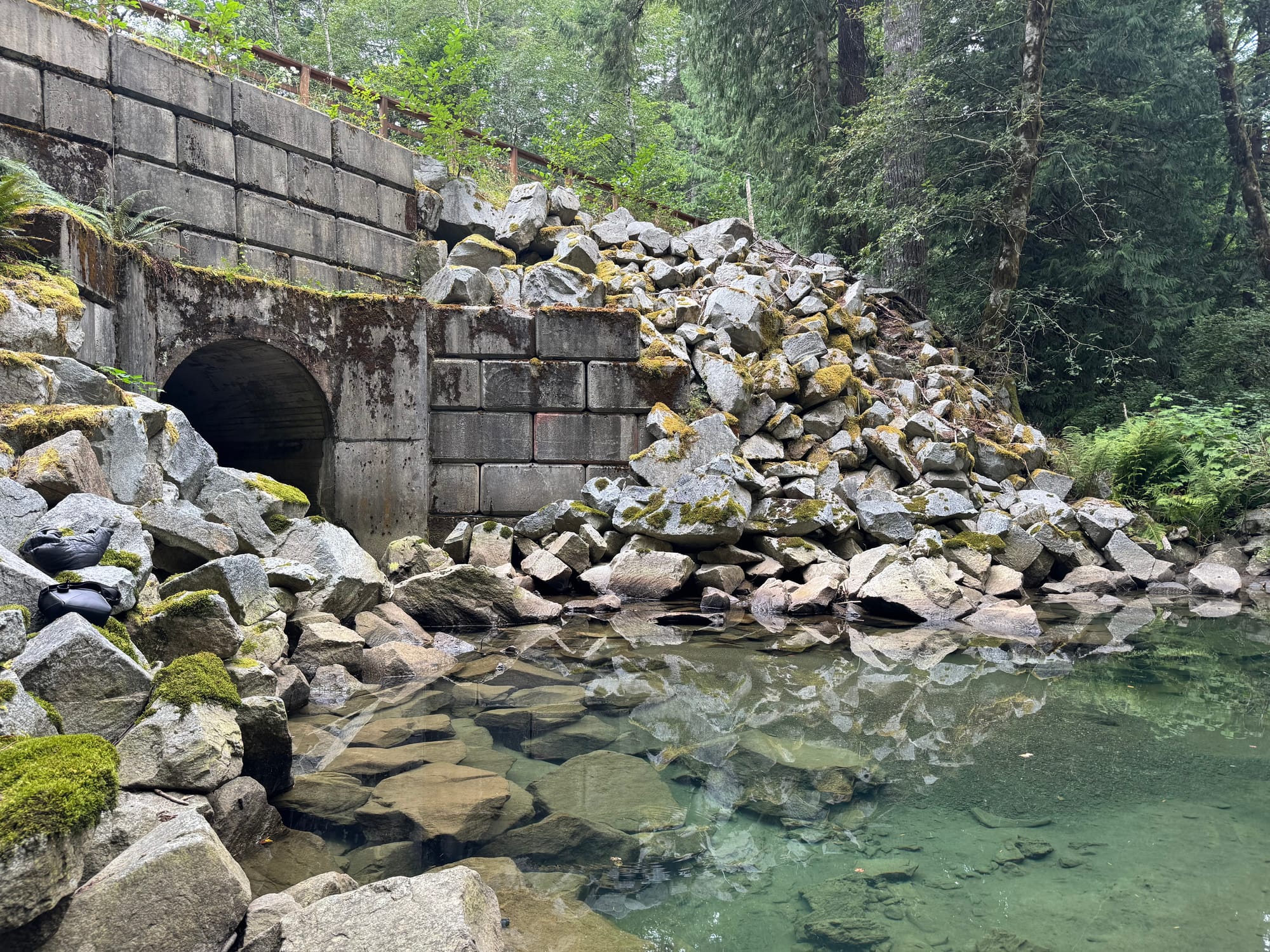

Snakes, frogs, logs, and rocks.
Along a 1.5km stretch of the creek bed, I'd estimate that I saw at least 500 coho. Each pool tended to have from ~10–50 individuals, with some particularly large pools containing more than I could see or count.
Some pools had dried entirely and left dozens of dead fish on the rocks, and I’m sure hundreds had already died this way earlier in summer. A half dozen ravens and a grey heron were evidence of an efficient cleanup crew working to keep the creek bed free of the stranded fish. I imagine the small puddles with fish are vulnerable to predators like raccoons, other birds, or even domestic cats too. You could literally pick up handfuls of them.
I didn't see a single signal crayfish in any of the pools, no matter the depth or bed composition. Perhaps they don't live in this creek. I haven't seen them in Comox lake yet either. This seems strange, but I don't see them in Cecelia Creek in Victoria, either. I'll have to figure out why sometimes they seem so ubiquitous yet sometimes they're totally absent.
What I did see was a lot of sticklebacks. I tried to get some good footage, but the camera didn't seem to want to focus on them most of the time.
This tiny puddle was also loaded with fairy shrimp, mosquito larvae, daphnia, ostracods, and copepods for the sticklebacks to feed on. Below is another view into a deeper pool, maybe half a meter at its deepest, containing at least 100 coho and a few sticklebacks.
What a beautiful place. I'll probably go back in a few days to check out what has changed. There's still a lot more to explore in Cumberland, and I could spend a long, long time on this creek alone. I think I'll have to check out Trent River next.
Puddle Updates (Aug 16 2024)
Upon returning a couple days after recording the sticklebacks, the puddle had dried and all of the fish and arthropods were gone. A common scene is bird foot prints in a sandy depression containing leaves and debris which have been picked through. As soon as the fish are visible and easy to get at, birds get straight to work on them. In this case the surrounding was rock so the foot prints aren't visible, but it's unlikely that isn't what happened here.
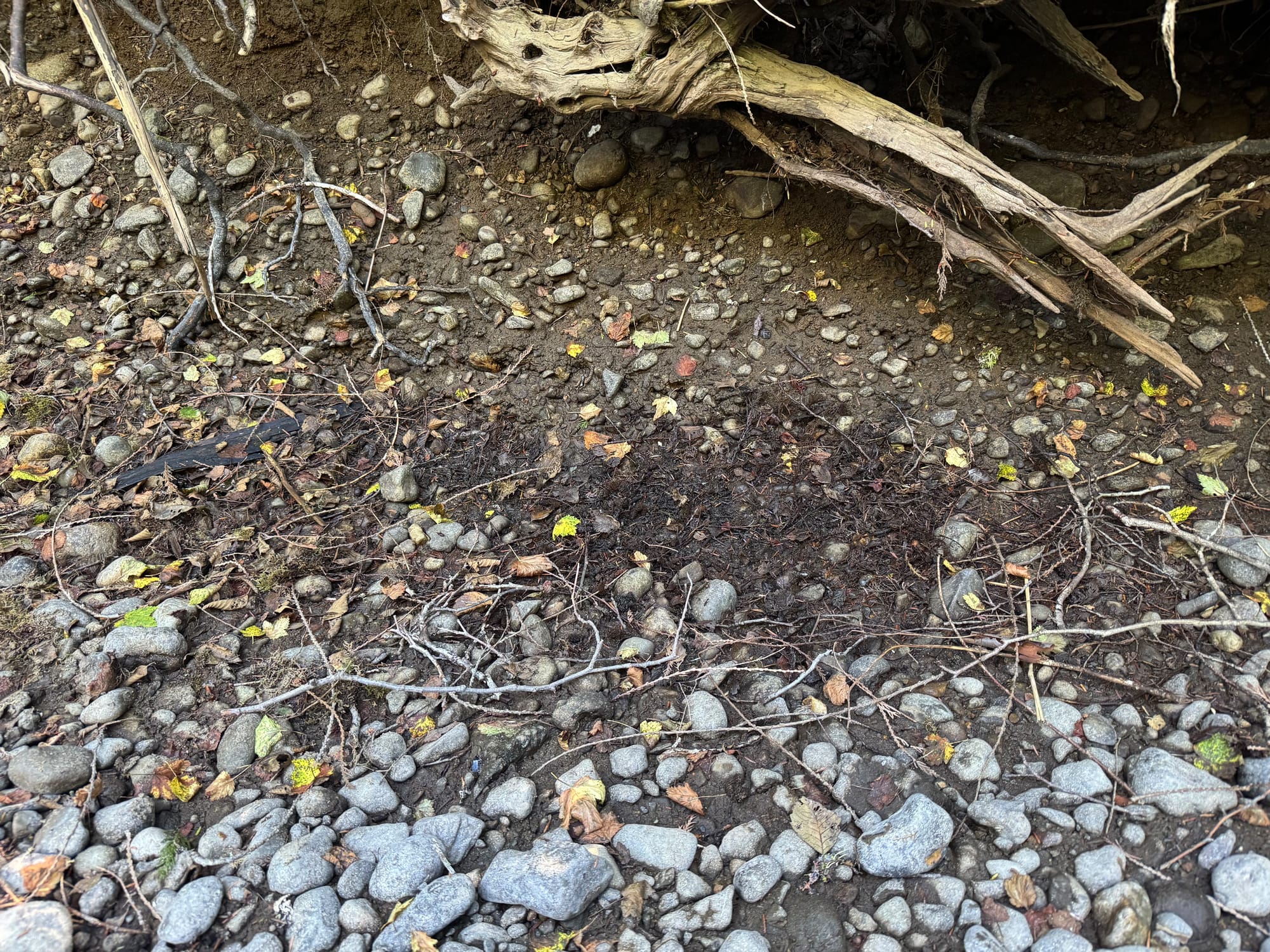
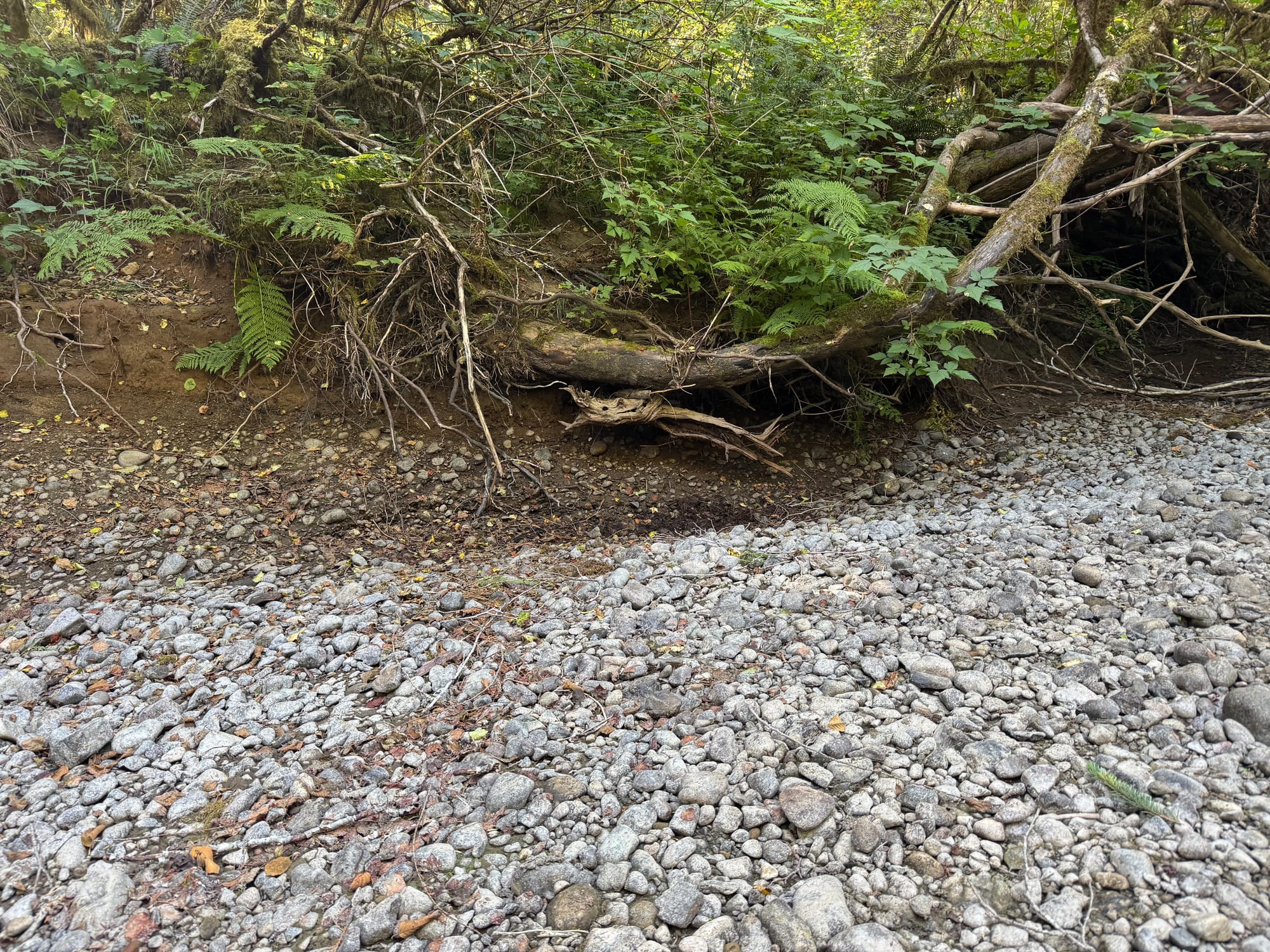
This is the location where the sticklebacks were recorded. Two days later, the water was gone and the leaves and twigs had been well-picked through.
This is a spot I found below the roots of a fallen tree. The pool was very small and I couldn't see any life in it from above except for a water beetle, but after putting the camera in the water and leaving, some fish came out of hiding.
Finally, a pool under the bridge leading to the lake. This short clip shows a prickly sculpin racing between rocks. I can't figure out why it's so skittish... There must be predators in the creek I couldn't see.